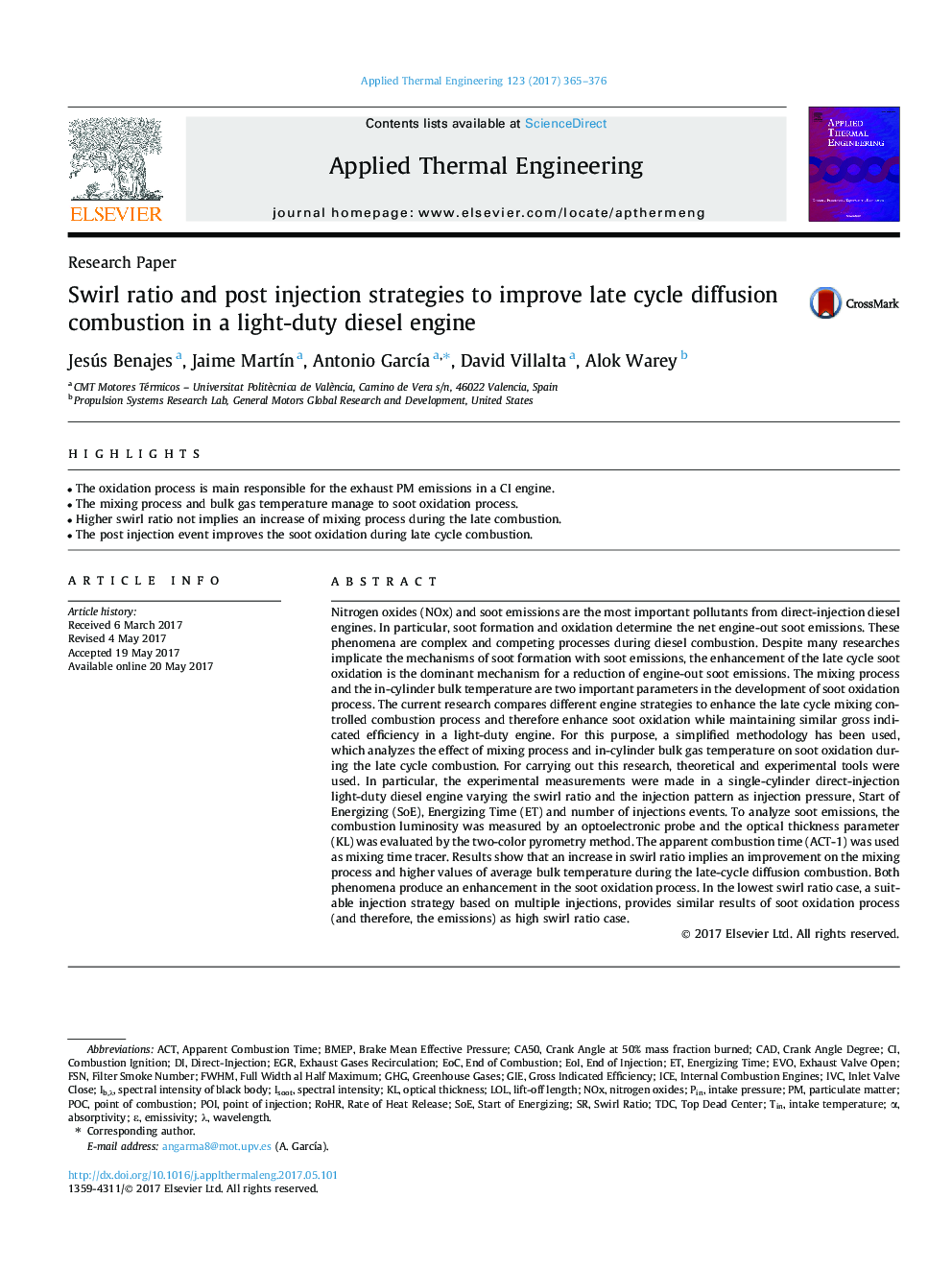| کد مقاله | کد نشریه | سال انتشار | مقاله انگلیسی | نسخه تمام متن |
|---|---|---|---|---|
| 4990518 | 1457106 | 2017 | 12 صفحه PDF | دانلود رایگان |
عنوان انگلیسی مقاله ISI
Swirl ratio and post injection strategies to improve late cycle diffusion combustion in a light-duty diesel engine
ترجمه فارسی عنوان
نسبت چرخش و استراتژی های پس از تزریق برای بهبود سرعت احتراق انتشار چرخه در یک موتور دیزل سبک
دانلود مقاله + سفارش ترجمه
دانلود مقاله ISI انگلیسی
رایگان برای ایرانیان
کلمات کلیدی
Intake temperatureGIEEOCPOIIVCgross indicated efficiencyFSNEOIFWHMACTPOCCA50SOEEGRTDCGHGBMEPNOx - NOXEvo - اویNitrogen oxides - اکسید نیتروژنtin - باور کنbrake mean effective pressure - ترمز فشار متوسط موثرDirect-injection - تزریق مستقیمAbsorptivity - جذبcrank angle degree - درجه زاویه دارexhaust valve open - دریچه خروجی باز استparticulate matter - ذرات معلقRoHR - روهرcrank angle at 50% mass fraction burned - زاویه میل لنگ در 50٪ جرم کسر می شودspectral intensity - شدت طیفیFilter Smoke Number - شماره دود فیلترOptical thickness - ضخامت نوریCAD - طراحی به کمک رایانه یا کَدLift-off length - طول بلند کردنWavelength - طول موجIntake pressure - فشار ورودیEmissivity - قابلیت انتشار، گسیلندگیLOL - لعنتیtop dead center - مرکز مرده بالاInternal combustion engines - موتورهای احتراق داخلیRate of heat release - نرخ انتشار گرماSwirl ratio - نسبت چرخشend of combustion - پایان احتراقEnd Of Injection - پایان تزریقPIN - پینGreenhouse gases - گازهای گلخانه ایIce - یخ
موضوعات مرتبط
مهندسی و علوم پایه
مهندسی شیمی
جریان سیال و فرایندهای انتقال
چکیده انگلیسی
Nitrogen oxides (NOx) and soot emissions are the most important pollutants from direct-injection diesel engines. In particular, soot formation and oxidation determine the net engine-out soot emissions. These phenomena are complex and competing processes during diesel combustion. Despite many researches implicate the mechanisms of soot formation with soot emissions, the enhancement of the late cycle soot oxidation is the dominant mechanism for a reduction of engine-out soot emissions. The mixing process and the in-cylinder bulk temperature are two important parameters in the development of soot oxidation process. The current research compares different engine strategies to enhance the late cycle mixing controlled combustion process and therefore enhance soot oxidation while maintaining similar gross indicated efficiency in a light-duty engine. For this purpose, a simplified methodology has been used, which analyzes the effect of mixing process and in-cylinder bulk gas temperature on soot oxidation during the late cycle combustion. For carrying out this research, theoretical and experimental tools were used. In particular, the experimental measurements were made in a single-cylinder direct-injection light-duty diesel engine varying the swirl ratio and the injection pattern as injection pressure, Start of Energizing (SoE), Energizing Time (ET) and number of injections events. To analyze soot emissions, the combustion luminosity was measured by an optoelectronic probe and the optical thickness parameter (KL) was evaluated by the two-color pyrometry method. The apparent combustion time (ACT-1) was used as mixing time tracer. Results show that an increase in swirl ratio implies an improvement on the mixing process and higher values of average bulk temperature during the late-cycle diffusion combustion. Both phenomena produce an enhancement in the soot oxidation process. In the lowest swirl ratio case, a suitable injection strategy based on multiple injections, provides similar results of soot oxidation process (and therefore, the emissions) as high swirl ratio case.
ناشر
Database: Elsevier - ScienceDirect (ساینس دایرکت)
Journal: Applied Thermal Engineering - Volume 123, August 2017, Pages 365-376
Journal: Applied Thermal Engineering - Volume 123, August 2017, Pages 365-376
نویسندگان
Jesús Benajes, Jaime MartÃn, Antonio GarcÃa, David Villalta, Alok Warey,
